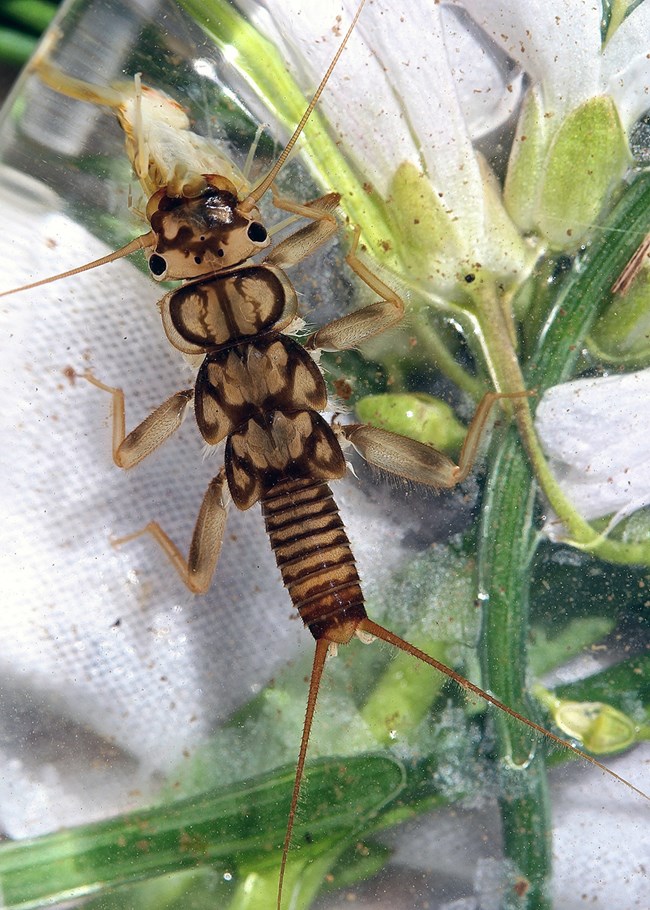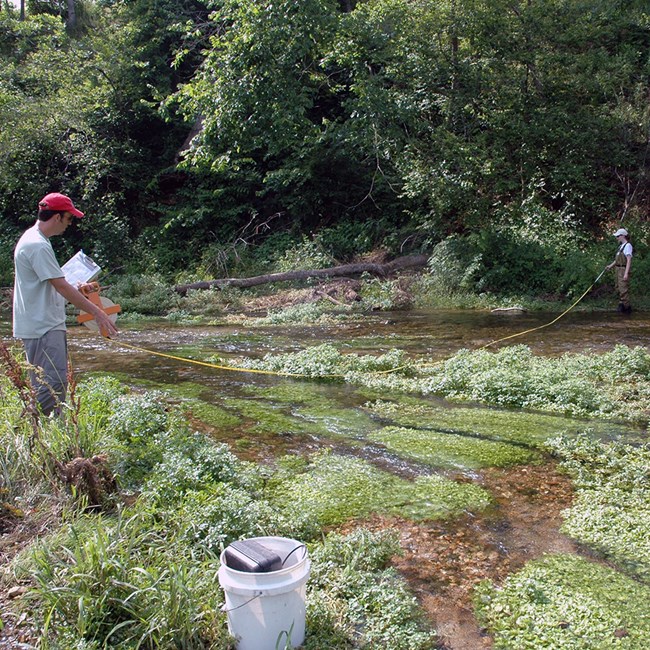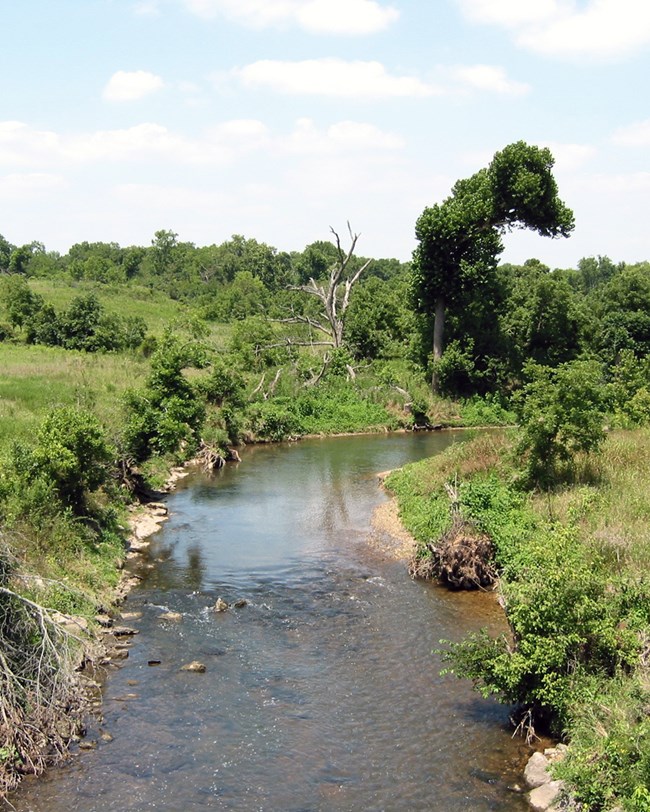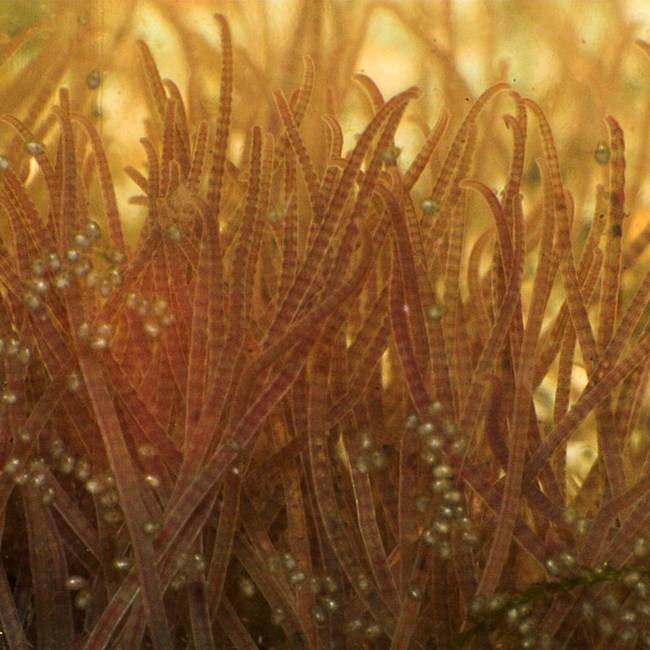Last updated: August 17, 2021
Article
Aquatic Invertebrate Monitoring at Wilson's Creek National Battlefield

Bob Hendricks
Why Monitor Aquatic Invertebrates?
Aquatic invertebrates, such as insect larvae, worms, crayfish, snails, and other animals without backbones, can tell us a lot about water quality in the streams they live in! They are a diverse group of animals that often react strongly and predictably to changing water conditions. Some species can live in poor-quality water, while others need cleaner water to survive. Aquatic invertebrate communities can usually tell us more about stream water quality than traditional water sampling can.
Wilson's Creek, Skegg's Branch, and Terrell Creek meander through Wilson's Creek National Battlefield. While these streams are protected within the park, they are threatened by pollution and other land use disturbances outside the park's boundary. In particular, urbanization threatens the Wilson's Creek and Skegg's Branch watersheds. The Heartland Inventory and Monitoring Network monitors aquatic invertebrates in these park streams as an early warning system for potential water quality problems. Knowing what species are present and their tolerance levels to pollution and other disturbances tells us how the streams are doing.
Photograph by Bob Hendricks/Flickr/CC by-SA-2.0.
.

NPS
How Do We Monitor Them?
Scientists use a special net called a Surber Stream Bottom Sampler to collect invertebrates in each of the three streams on the park in May and June. In the 24 hours prior to invertebrate collection, we take standard water quality measurements, such as temperature, pH (how acidic or alkaline the water is), and turbidity (water cloudiness). We also measure stream flow and depth and record information on algae, aquatic vegetation, and other streambed characteristics.

NPS

NPS
How Are Park Streams Doing?
The aquatic invertebrate communities in Wilson's Creek, Skegg's Branch, and Terrell Creek indicate that the streams are currently in good condition. Rare and environmentally sensitive species were found in all three streams in 2016. Water quality samples generally fell within acceptable ranges.
While streams are not impaired at this time, occasional mild to moderate disturbances cannot be ruled out. The continuing threat from urbanization outside park boundaries could have negative consequences on water quality and invertebrate communities in Wilson's Creek and Skegg's Branch. We will continue to monitor aquatic invertebrates in park streams to get an early warning if there are changes in stream condition.

Matthias Tilly
Did You Know?
The water quality in Wilson's Creek has improved greatly since the 1960s when the creek carried heavy loads of fecal coliform bacteria and other pollutants coming from an upstream wasterwater treatment plant. The pollution was so bad that the creek gave off a foul odor and it supported huge populations of an aquatic worm called Tubifex tubifex. This worm is so tolerant of pollution that it can thrive in raw sewage.
The stream has now recovered to a point where it meets the state criteria for most water quality measures and aquatic wildlife have recovered to acceptable levels. Most notable are the environmentally sensitive stoneflies (in the family Plecoptera) that have returned to the creek after having been extirpated for decades. These welcome changes are largely due to stricter standards and community-supported improvements to the wastewater treatment plant. Although minor issues remain with the creek, its great recovery is something to celebrate!
(Photography by Matthias Tilly CC-BY-3.0; cropped)
For More Information
Check back later for updates. We will update this page as we gather more information.
Visit the Heartland Inventory and Monitoring Network website.
